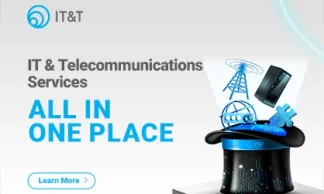Take advantage of distributed ledgers to eliminate financial fraud
Unless you’ve been hibernating for the last few years, you’ll have heard of ‘blockchain’, but you may not be as familiar with ‘Distributed Ledger Technology’.
Let’s agree to call it ‘DLT’, and find out how it can help your business to beat the fraudsters.
What is DLT?
While many people think blockchain technology and DLT is the same, it is essential to distinguish the two to be able to fully leverage their value.
Blockchain is to DLT as Maserati is to luxury cars. That is, blockchain is a subtype of DLT.
Blockchain, as its name suggests, consists of sequences of blocks made up of data. DLT doesn’t require such a chain and, as such, offers better scaling options. DLT also doesn’t necessarily require data to be structured in blocks; it’s a decentralised database spread across multiple sites and users.
Through DLT, every ‘touchpoint’ or node maintains the ledger, and when data changes occur, the update takes place independently at each node. All nodes have equal authority and there’s no server managing the database which is what makes the technology transparent. Each node can update the ledger, while the other nodes verify its existence.
So with the inherently decentralised and highly transparent nature of DLT, how can it be used to mitigate financial fraud?
Secure digital identity
Digital identity management is easier and more secure with DLT. Previously, organisations controlled their digital identities and other sensitive information in their own centralised database, a vulnerable target for hackers. But DLT stores the identity information in a decentralised, shared ledger, facilitating third party verification and conserving consumer privacy.
As no one entity can control data hosted on DLT, the lack of a centralised entry point drastically reduces the likelihood of data hacking.
Data hosted on DLT is simultaneously public and private. The private key linking to the data is only accessible to the owner and can be used for identity verification or the signing of documents, for example. The public key can be shared with institutions to verify the data’s authenticity.
DLT’s role in eliminating payment fraud
When a sale occurs, it involves the seller, the buyer, one or more banks and possibly the ATO. Using DLT, each participant must confirm the transaction at every step in the process, sharing a transparent, searchable master source containing guaranteed true data.
This makes it possible to trace the whole sequence of asset and money transfers involved in each sale process, no matter how many steps there are in the chain and how many banks, countries and currencies are involved. It’s a much more secure and less cumbersome process than a Letter of Credit, for example.
DLT helps to stamp out money laundering
Through DLT, financial actors and regulators could have access to real time transactional and cross-institutional data - much more so than is currently available.
Every participant in a DLT ledger can see all changes made and detect any that are unauthorised. So every organisation or individual involved is approving the information using their secure digital identity, and leaving a record of their involvement. Convoluted money trails become easier to follow. Regulators and taxation authorities can rely on the accuracy of the information in the ledger and hold any wrongdoers – such as money launderers – accountable.
Foolproof DLT-hosted smart contracts
The transaction among parties is expressed through, and independently executed by, computer code known as a ‘smart contract’. No party has the ability to interrupt or otherwise tamper with this code.
A distributed ledger can confirm that a transaction (such as a delivery of goods or services) has taken place, triggering the next stage in a set of rules known as a ‘smart contract’. The smart contract automates the next step in the process once certain conditions (e.g., the delivery) have been met. This self-executing stage could be on-shipment, or the termination or initiation of insurance cover, or release of payment.
DLT requires a strong storage solution
DLT is more secure than centralised storage by default because data is spread across different storage points. This makes it less likely to be hit by malware or hackers. Robust and stable data storage is vital to underpin these data-driven DLT solutions. Hewlett Packard Enterprise servers and systems that are purpose-built for big data analytics, software-defined storage, backup and archive, and other data storage-intensive workloads. They’re the market leader in data storage.





